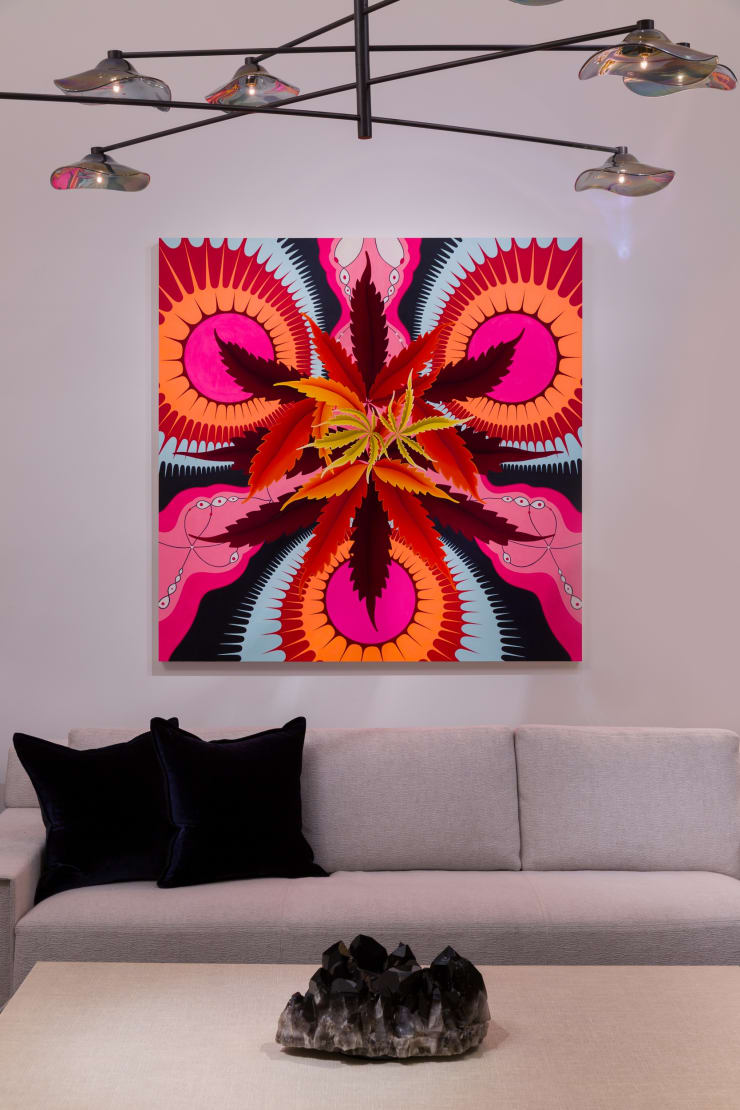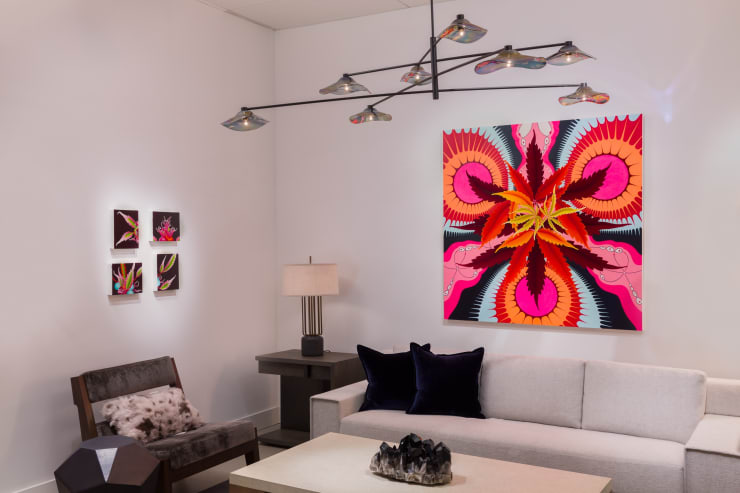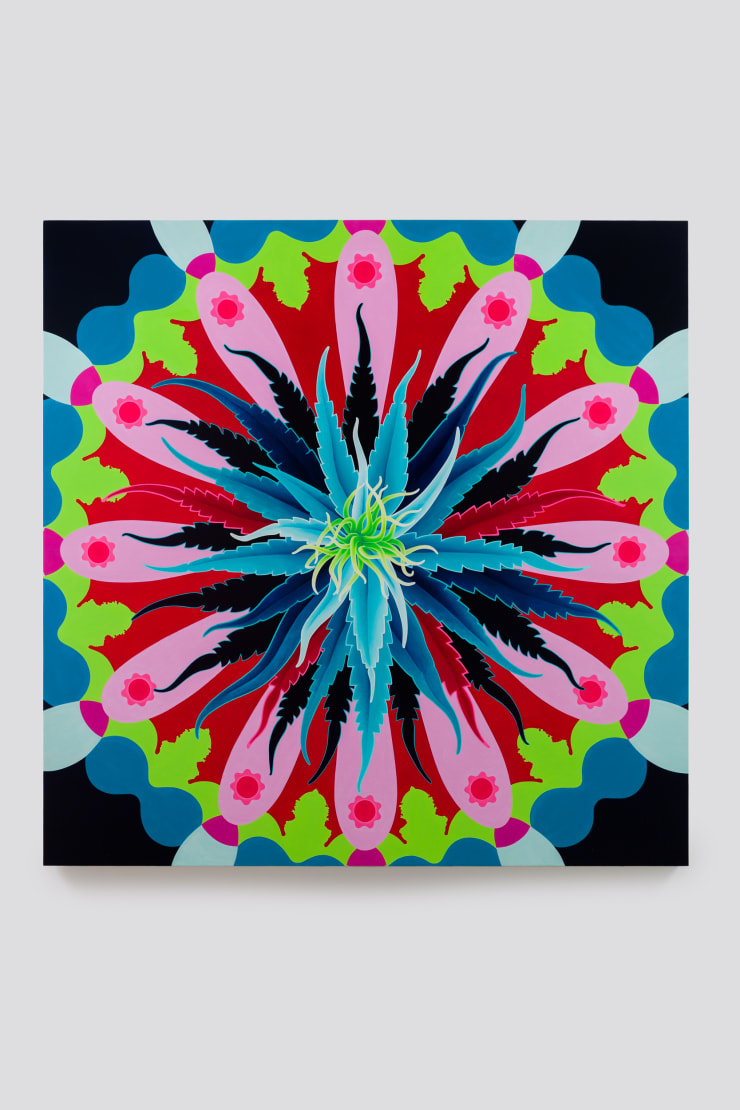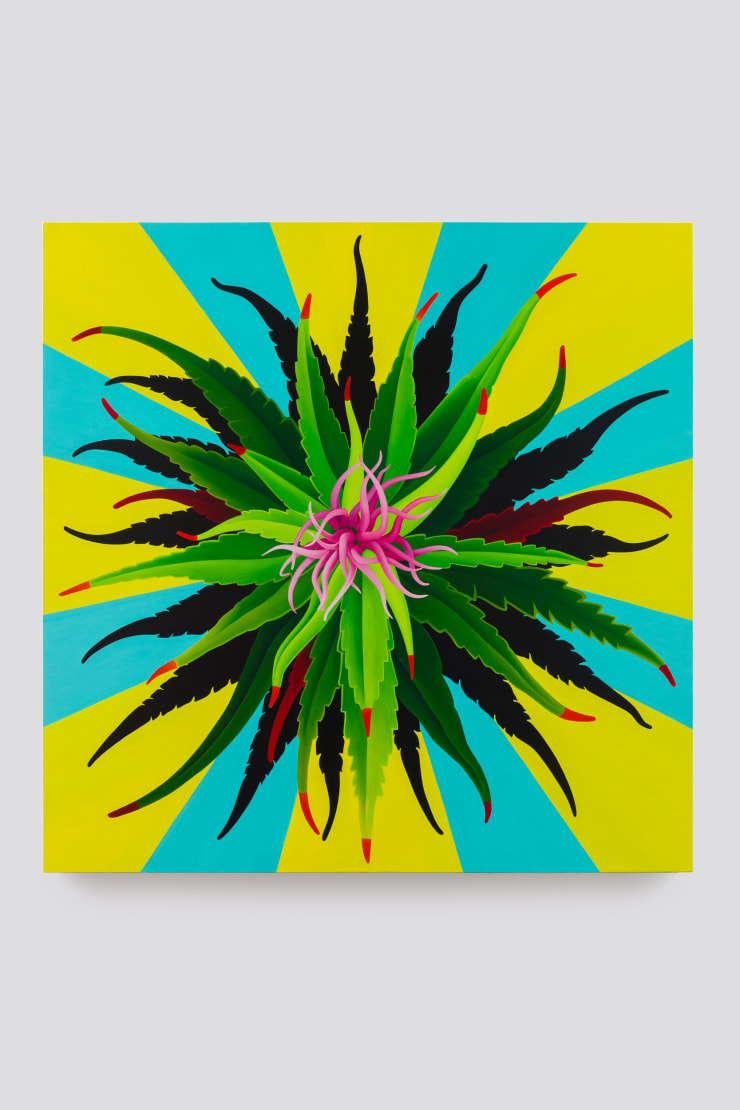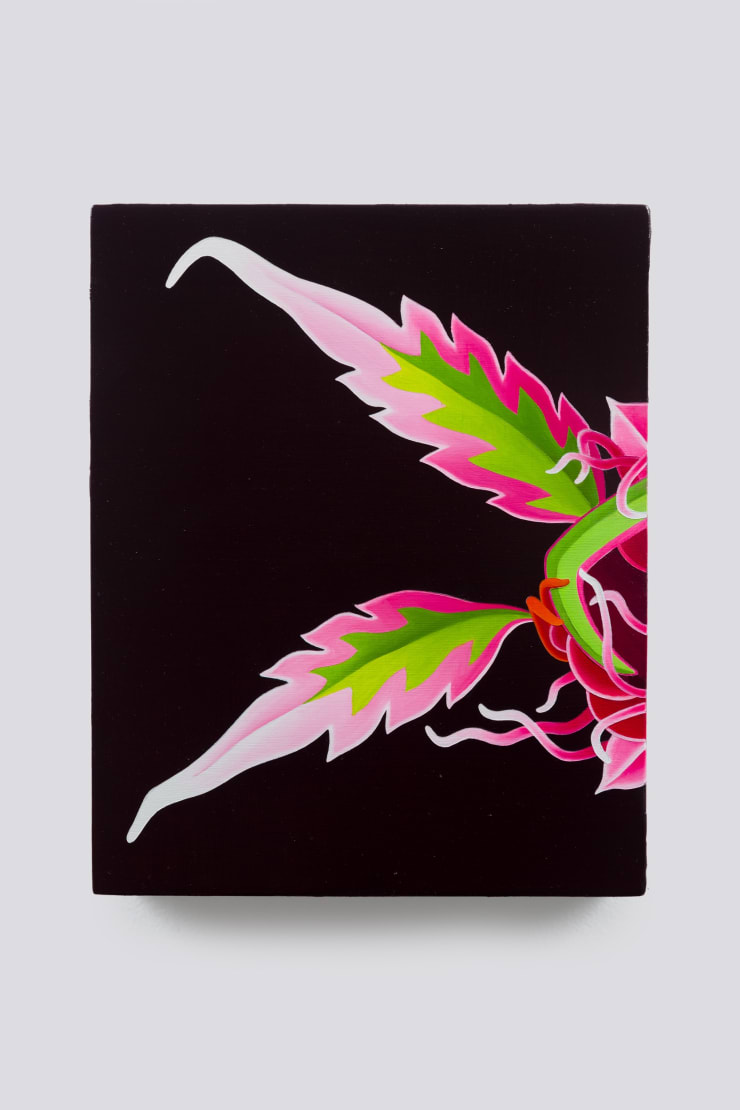Trichromic: New Works by Cherie Benner Davis
Edward Cella Art & Architecture proudly presents the exhibition Trichromic that features a striking new body of work by painter Cherie Benner Davis. Davis playfully riffs on the botanical forms and cultural associations of Cannabis, desert landscape, psychedelia, and hard-edge painting. The work is on view Edward Cella Art & Architecture at the Thomas Lavin Showroom at the Pacific Design Center from January 31 through March 25, 2022.
Edward Cella Art & Architecture proudly presents the exhibition Trichromic that features a striking new body of work by painter Cherie Benner Davis. Davis playfully riffs on the botanical forms and cultural associations of Cannabis, desert landscape, psychedelia, and hard-edge painting. The work is on view Edward Cella Art & Architecture at the Thomas Lavin Showroom at the Pacific Design Center from January 31 through March 25, 2022.
In her work, Davis examines the significant shifting social acceptance and broader legalized use of the potent flowering Cannabis herb by setting out to create fantastical and optically active compositions. She draws from a diverse range of visual sources from the rose windows of Medieval cathedrals to contemporary fractal theory. Oscillating between hard-edged abstraction, magical realism, and pure sensation; the series of paintings posits the role of the artist in visualizing the shared social phenomenon as political and cultural boundaries change rapidly.
Trichromic advances a system of paintings Davis calls Super-Natural that stems from the artist’s intense foray in transforming Southern California residential landscapes into drought-tolerant gardens, designed in response to the ongoing drought. Inspired by the sculptural forms and bombastic colors of the succulent plants, Davis sought to transform through oil paint their metaphorical qualities, considering relationships in the language of artmaking between form and abstraction; figure and ground; and image and meaning.
Following her interests in plants that survive in tough conditions like succulents and Cannabis—still considered a Schedule 1 drug—Davis shifts her attention to the sacred plant to find a way to hold disparate modalities together at once in her paintings. She set out to use the plant’s palm like serrated leaves as a motif that, in the artist’s words: “exploit the various elements of painting: color, materiality, processes, image and abstraction, into an image in which all parts interact, often exuberantly, in the same field.”
While marijuana is not so strongly associated with a hallucinatory experience, these paintings are highly stylized, and the psychedelic color palette references aspects of Southern California counterculture of the 1960s. Executed in eye-popping saturated colors, the paintings are designed digitally using collage and photographic source materials, then interpreted into oil paintings that embrace the use of exaggerated or arbitrary color.
-
 Cherie Benner Davis, Phoenician Dreams, 2021
Cherie Benner Davis, Phoenician Dreams, 2021 -
 Cherie Benner Davis, Souvenirs of Rose y Bleu, 2021
Cherie Benner Davis, Souvenirs of Rose y Bleu, 2021 -
 Cherie Benner Davis, Hail Mary, 2019
Cherie Benner Davis, Hail Mary, 2019 -
 Cherie Benner Davis, Daze of Fire and Ice, 2021
Cherie Benner Davis, Daze of Fire and Ice, 2021 -
 Cherie Benner Davis, Tickle my Fancy, 2021
Cherie Benner Davis, Tickle my Fancy, 2021 -
 Cherie Benner Davis, Party-Pants, 2021
Cherie Benner Davis, Party-Pants, 2021 -
 Cherie Benner Davis, Hither, 2021
Cherie Benner Davis, Hither, 2021 -
 Cherie Benner Davis, High-de-Ho!, 2021
Cherie Benner Davis, High-de-Ho!, 2021

